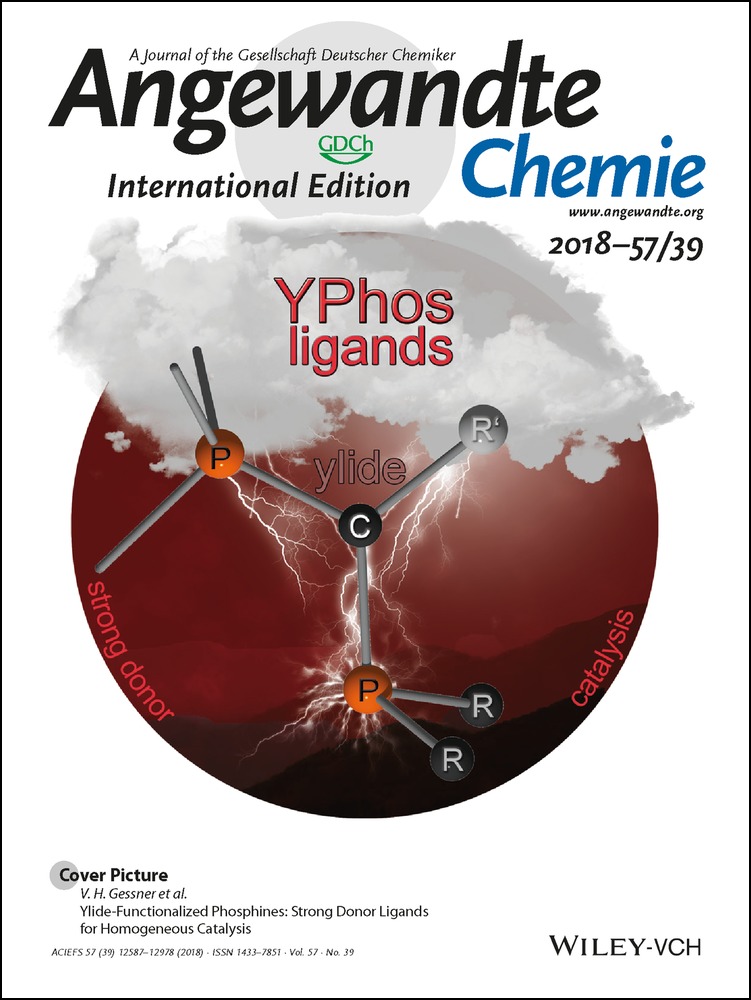A New Approach to Sustainability: A Moore's Law for Chemistry†
We thank the EPSRC (EP/P013341/1) and the BBSRC (BB/L013940/1) for support.
Graphical Abstract
“… How do we have a major impact on delivering sustainable chemistry? Carbon-neutral laboratories can drive down the environmental costs of chemistry. We propose that sustainable chemistry requires some overarching goal that can be embraced by everyone in the chemical supply chain as well as by the public …” Read more in the Guest Editorial by Martyn Poliakoff, Peter Licence, and Michael W. George.
The questions of what “sustainable chemistry” actually is and how it differs from “green chemistry” are still the subject of some discussion. In practice, it is much simpler to see that our current trajectory is unsustainable than to define what is meant by “sustainable chemistry”. For example, unsustainability is perhaps more evident in our use of the less-abundant elements (e.g., P, Zn, or lanthanides) than in our profligate use of fossil hydrocarbons because we can argue that hydrocarbons could be replaced by conversion of biomass or atmospheric CO2. Some of these scarce elements could be replaced by other, more abundant elements, but others such as phosphorus, which is essential to the replication of living organisms, cannot. We are not destroying or consuming these elements in the same way that we consume oil, but we are plundering a few concentrated sources of these elements and then distributing them so thinly across the planet that they are no longer recoverable at any reasonable economic cost. In effect, we are being defeated by entropy.
In the context of basic research, chemical laboratories are very often the most energy-hungry buildings on research campuses, with fume hoods pumping out vast quantities of air and instrumentation that is very demanding in terms of energy. In collaboration with industry, we have initiated a large-scale science experiment that aims to explore a potentially transformative solution to this problem. The GSK Carbon Neutral Laboratories (CNL) in Nottingham are a demonstration that intelligent design and the application of state-of-the-art construction methods and can drive down the environmental costs of chemistry, whilst providing a safe, modern suite of laboratories that would inspire future generations to think creatively and innovate to deliver smarter, better, and more efficient chemical processes.
Clearly, the building and equipping of such a facility has an environmental cost that can be measured in equivalents of CO2, and this carbon “debt” must be paid off to achieve carbon neutrality. Therefore we have deployed a strategy to pay it off within 25 years. This involves ensuring firstly that the laboratories are ultra-efficient and constructed from low-impact building materials, and secondly that the entire energy requirement for running our laboratories is drawn from renewable energy systems, including a balanced portfolio of photovoltaic and biomass-fired combined heat and power systems. Thus, we generate sufficient energy not only to maintain a safe and thriving research environment, but also to export surplus energy to other buildings across our campus, thereby offsetting our carbon debt.
The laboratories incorporate smart design, operating on a demand-driven basis. If there are no experiments or occupants in the laboratory, the intelligent building management system adjusts the flow of air accordingly and starts to put noncritical systems into a rest state. This process ensure that a safe environment is maintained at all times, but reduces the energy consumption to noncritical systems accordingly. The experiment is clearly working. After 18 months, electricity consumption is around 30 % less and municipal water usage around 40 % less than in an equivalent traditional chemistry building. There is no compromise in the quality of the facilities and instrumentation, which are enabling the scientists and engineers working there to deliver cutting-edge research in a truly energy-resilient environment.
Although the wider implementation of carbon-neutral laboratories could improve the start of the chemical supply chain, major impact in sustainable chemistry also requires radical change at the other end of the chain. In other words, sustainable chemistry must have an emphasis on industrial application and implementation. Much of the new science under the banner of “green chemistry” has yet to find application in industry. This is surprising because atom-efficient processes that deliver molecules of impact with lower levels of toxicity and minimal environmental harm should surely be good. However, advances in the optimisation of industrial processes have transformed existing synthetic routes to make them more profitable and, as a consequence, less harmful to the environment. It should be noted that currently the prime driver for such developments is almost invariably economic. The rising cost of waste disposal has driven process design towards the reduction of unnecessary costs and promotion of cleaner methodologies.
In principle, there should be common goals for both the scientific and business communities, namely working towards satisfying the demands of an increasing global population on a sustainable basis. There is significant complexity in the supply, demand, and business models for implementing sustainable chemicals manufacture. Furthermore, achieving even partial sustainability is likely to be a lengthy process, longer than the short-term horizons of much of the chemical using industries. Industrial development over the past 100 years has been driven by financial considerations, products deliver a function but they also provide an income. The number of income streams have been reduced as environmental legislation squeezes down and new costs are added to clean up waste. However, things are beginning to change. The wider appreciation of critical materials has led to increased interest in the circular economy which is now being taken up quite widely.
In this Editorial, we suggest a different strategy for achieving sustainability. We propose that sustainable chemistry requires some overarching goal that can be embraced by everyone involved in the chemical supply chain as well as by the public in general. Our thinking is shaped by the development of the electronics industry over our lifetimes. These developments have been encapsulated by the so-called “Moore's Law” which broadly stated that the number of transistors per unit area of an integrated circuit would double every 12–18 months with a corresponding drop in unit cost of manufacture, and this has held true since 1965.
Our contention is that the majority of chemicals are only used once and that most users of those chemicals, whether specialist or end-user, are more interested in the effect that the chemicals produce rather than the amount of actual chemical that is purchased or used. Thus, they expect a medical condition to be improved by a pharmaceutical, surface tension to be reduced by a surfactant, corrosion to prevented, a reaction to be catalysed, and so on. We have previously suggested that chemists should start using the “F-factor”, the amount of chemical that is needed to create a given effect (Green Chem., 2014, 16, 21).
Now we propose that this approach should lead to a new concept, a Moore's Law for chemistry (MLFC) namely that over a given period, say five years, sustainable chemists should strive to reduce the amount of a chemical needed to produce a given effect by a factor of two and this process should be repeated for a number of cycles. The key will be to make the whole concept, especially the economics, work for everyone which will require a change in business model for the chemicals market. This change could well be consumer-driven rather than imposed by suppliers, though legislation might be needed to catalyse the change. In addition, customers will have to accept that they are, in essence, buying a service, rather than a quantity of chemicals. This can be thought of as building on the concept of “chemical leasing”, an approach which is gradually gaining ground.
In principle, addressing the challenges of the MLFC will be different from the original Moore's Law because that was based on ever more precise engineering while the MLFC is based on molecular properties which often differ in size by orders of magnitude. Success will be achieved by a combination of new chemicals and products as well as smarter use of existing ones. A key problem may be benchmarking how much of a chemical is actually used for a given effect because much of this information is likely to be commercially sensitive knowhow. The reduction might be relatively straightforward for use of solvents where increasing the concentration of reactants could reduce the usage of solvents or increase the amount of product made with a given amount of solvent.
Therefore, the goals of the MLFC might be easier to achieve in some areas than in others but the ultimate reduction would not need to be as dramatic as for integrated circuits. Six cycles of the MLFC, namely a reduction in chemical usage by 64 times (i.e., 26) might be sufficient to have a major impact on the sustainability of the chemical enterprise. Even less might be required if the MLFC were to be accompanied by a parallel effort to increase the serviceable lifetime of at least some of the chemical-containing products and replacement of single-use items with those that could be used multiple times. The overall usage of chemicals could be further reduced by designing products that are easily recycled or disassembled for reuse, as well as recycling within chemical processes and making better use of unavoidable by-products.
Some customer education and considerable innovation will be required to make people accept longer lifetimes for their possessions. Much of the problem lies in changing human behaviour which is often complex, as exemplified by how frequently people upgrade their smartphones. Nevertheless, our message is one of hope. Wider adoption of low-carbon research buildings and low-energy instrumentation together with appropriate education could have a major effect on future generations of chemists while the MLFC concept could trigger the radical debate needed to unite all stakeholders behind a shared vision of a sustainable chemical future.






